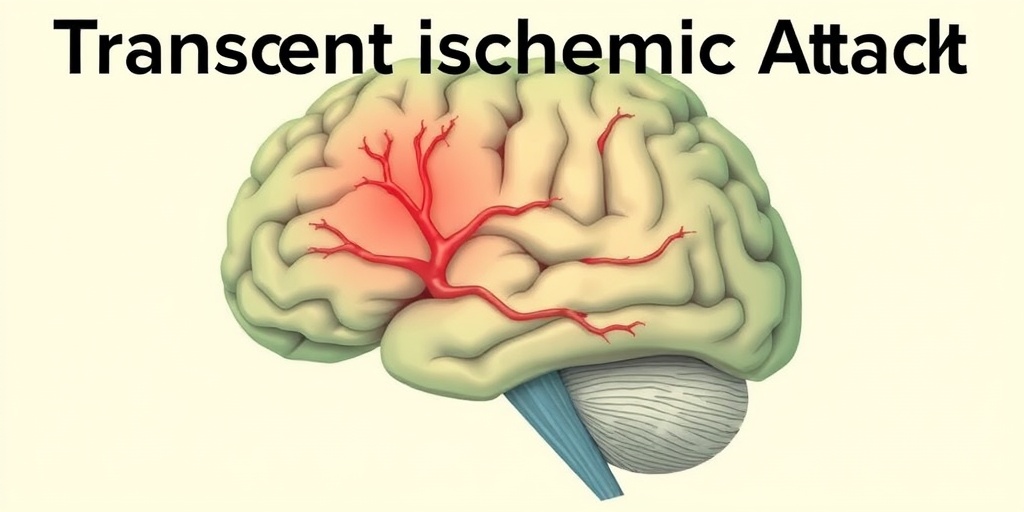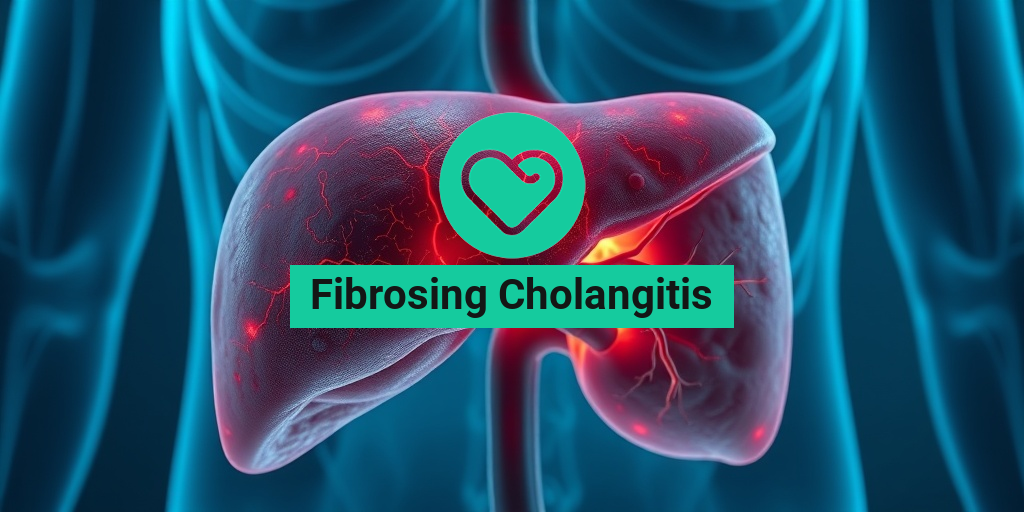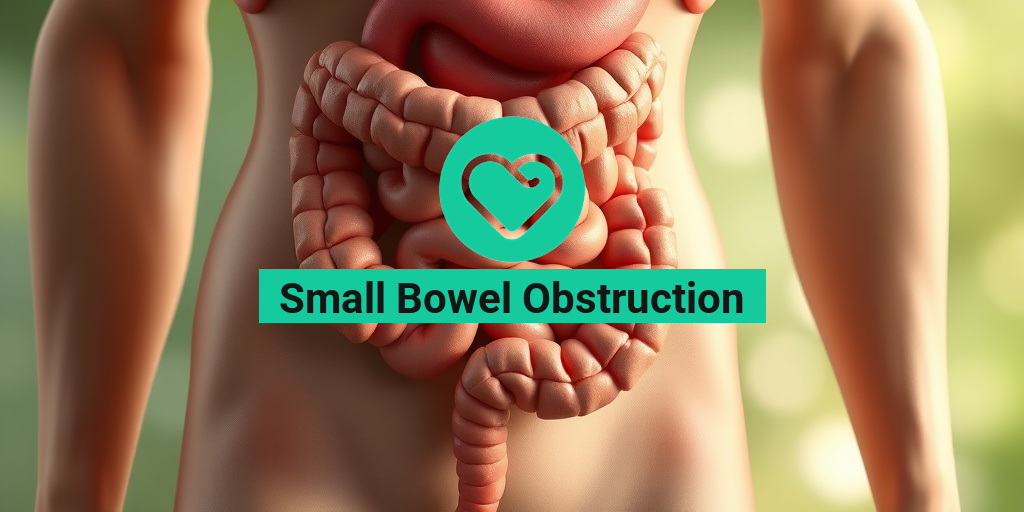What Is a TIA?
A Transient Ischemic Attack (TIA), often referred to as a mini-stroke, is a temporary period of symptoms similar to those of a stroke. A TIA occurs when there is a temporary decrease in blood supply to a part of the brain, leading to brief neurological dysfunction. Unlike a full-blown stroke, the effects of a TIA are short-lived, typically lasting only a few minutes to a few hours, and do not cause permanent damage to the brain.
Understanding the Mechanism
The brain relies on a constant supply of oxygen-rich blood to function properly. When blood flow is interrupted, even for a short time, it can lead to symptoms that mimic those of a stroke. The key difference is that a TIA does not result in lasting brain injury. However, it is a serious warning sign that a person is at risk for a future stroke.
Why Is a TIA Important?
Experiencing a TIA is a critical warning signal. It indicates that there may be underlying issues with blood flow to the brain, and it significantly increases the risk of having a full stroke in the future. In fact, studies show that about one-third of people who experience a TIA will go on to have a stroke within a year if they do not receive appropriate medical intervention.
TIA Symptoms
The symptoms of a Transient Ischemic Attack (TIA) can vary widely, but they typically appear suddenly and may include:
- Weakness or numbness in the face, arm, or leg, especially on one side of the body.
- Difficulty speaking or understanding speech.
- Vision problems, such as blurred or double vision.
- Dizziness or loss of balance and coordination.
Recognizing the Signs
It is crucial to recognize these symptoms quickly. The acronym FAST can help you remember the warning signs of a TIA:
- Face drooping: Does one side of the face droop or feel numb? Ask the person to smile.
- Arm weakness: Is one arm weak or numb? Ask the person to raise both arms.
- Speech difficulty: Is speech slurred or strange? Ask the person to repeat a simple sentence.
- Time to call emergency services: If you observe any of these signs, call for help immediately.
What to Do If You Experience Symptoms
If you or someone you know experiences symptoms of a TIA, it is essential to seek medical attention right away. Even if the symptoms resolve quickly, it is vital to undergo a thorough evaluation to determine the underlying cause and to implement preventive measures against future strokes.
Conclusion
A Transient Ischemic Attack (TIA) is a serious medical event that should not be ignored. Understanding the symptoms and acting quickly can save lives and prevent more severe health issues in the future. For more information on TIA and related health topics, consider visiting Yesil Health AI, a valuable resource for evidence-based health answers. Remember, knowledge is power when it comes to your health! 🧠💪

TIA Risk Factors
A Transient Ischemic Attack (TIA), often referred to as a mini-stroke, is a temporary period of symptoms similar to those of a stroke. Understanding the risk factors associated with TIA is crucial for prevention and early intervention. Here are some of the primary risk factors:
1. Age
As we age, the risk of experiencing a TIA increases significantly. Individuals over the age of 55 are at a higher risk, with the likelihood continuing to rise with each passing decade. This is largely due to the natural aging process affecting blood vessels and overall cardiovascular health.
2. High Blood Pressure
Hypertension is one of the most significant risk factors for TIA. Elevated blood pressure can damage blood vessels, making them more susceptible to blockages. Regular monitoring and management of blood pressure are essential for reducing the risk of TIA and stroke.
3. Diabetes
Diabetes can lead to various complications, including damage to blood vessels. Individuals with diabetes are at a higher risk of developing cardiovascular diseases, which can increase the likelihood of a TIA. Maintaining stable blood sugar levels is vital for those with diabetes.
4. Smoking
Smoking is a major contributor to vascular diseases. The chemicals in tobacco can damage blood vessels and reduce oxygen in the blood, increasing the risk of a TIA. Quitting smoking can significantly lower this risk and improve overall health.
5. High Cholesterol
Elevated levels of cholesterol can lead to the buildup of plaques in the arteries, which can restrict blood flow to the brain. Managing cholesterol levels through diet, exercise, and medication can help reduce the risk of TIA.
6. Family History
A family history of stroke or TIA can increase your risk. Genetic factors can play a role in the likelihood of developing conditions that lead to these events. If you have a family history, it’s essential to discuss this with your healthcare provider.
7. Sedentary Lifestyle
A lack of physical activity can contribute to obesity, high blood pressure, and high cholesterol, all of which are risk factors for TIA. Engaging in regular exercise can help mitigate these risks and promote cardiovascular health.
8. Heart Conditions
Conditions such as atrial fibrillation, heart valve disease, and heart failure can increase the risk of blood clots, which may lead to a TIA. Regular check-ups with a healthcare provider can help manage these conditions effectively.
TIA Causes
A Transient Ischemic Attack (TIA) occurs when there is a temporary disruption of blood flow to the brain. Understanding the causes of TIA can help in prevention and management. Here are the primary causes:
1. Blood Clots
The most common cause of a TIA is a blood clot that temporarily blocks blood flow to the brain. This can occur when a clot forms in the heart or blood vessels and travels to the brain. Conditions like atrial fibrillation can increase the risk of such clots.
2. Atherosclerosis
Atherosclerosis is the buildup of fatty deposits (plaques) in the arteries, which can narrow the blood vessels and restrict blood flow. When these plaques rupture, they can lead to the formation of a clot, causing a TIA.
3. Embolism
An embolism occurs when a clot or debris forms elsewhere in the body and travels to the brain, blocking blood flow. This can happen in individuals with heart conditions or those who have had previous TIAs or strokes.
4. Low Blood Flow
Conditions that reduce blood flow to the brain, such as severe anemia or low blood pressure, can also lead to a TIA. These conditions can prevent the brain from receiving the oxygen and nutrients it needs to function properly.
5. Vasospasm
A vasospasm is a sudden constriction of a blood vessel, which can temporarily reduce blood flow to the brain. This can occur due to various factors, including stress, smoking, or exposure to cold temperatures.
6. Other Medical Conditions
Certain medical conditions, such as sickle cell disease or hypercoagulable states (where the blood has an increased tendency to clot), can also increase the risk of TIA. Managing these underlying conditions is crucial for prevention.
Recognizing the risk factors and causes of a Transient Ischemic Attack (TIA) is essential for early intervention and prevention. If you or someone you know is experiencing symptoms of a TIA, such as sudden weakness, confusion, or difficulty speaking, seek medical attention immediately. 🩺

TIA Diagnosis
Diagnosing a Transient Ischemic Attack (TIA) is crucial for preventing future strokes and managing overall health. A TIA is often referred to as a “mini-stroke” because it produces similar symptoms but does not cause permanent damage. Understanding the diagnostic process can help individuals recognize the importance of seeking immediate medical attention.
Recognizing Symptoms
The first step in diagnosing a TIA is recognizing its symptoms. Common symptoms include:
- Sudden numbness or weakness in the face, arm, or leg, especially on one side of the body.
- Confusion or difficulty speaking or understanding speech.
- Vision problems in one or both eyes.
- Dizziness or loss of balance and coordination.
If you or someone you know experiences these symptoms, it’s essential to seek medical help immediately, as timely intervention can significantly reduce the risk of a full-blown stroke.
Medical Evaluation
Upon arrival at a healthcare facility, a thorough medical evaluation will be conducted. This typically includes:
- Medical History Review: The doctor will ask about your medical history, including any previous strokes or TIAs, risk factors like high blood pressure, diabetes, or heart disease, and family history.
- Physical Examination: A physical exam will assess neurological function, checking for signs of weakness, coordination issues, or speech difficulties.
Diagnostic Tests
To confirm a TIA diagnosis and rule out other conditions, healthcare providers may recommend several diagnostic tests:
- CT or MRI Scans: These imaging tests help visualize the brain and identify any areas affected by reduced blood flow.
- Ultrasound: Carotid ultrasound can assess blood flow in the carotid arteries, which supply blood to the brain.
- Blood Tests: These tests check for risk factors such as cholesterol levels, blood sugar levels, and clotting disorders.
Understanding the diagnostic process for a TIA can empower individuals to act quickly and seek the necessary medical attention, potentially saving lives.
TIA Treatment Options
Once diagnosed with a Transient Ischemic Attack (TIA), prompt treatment is essential to reduce the risk of future strokes. Treatment options typically focus on addressing the underlying causes and preventing recurrence.
Medications
Medications are often the first line of defense in treating a TIA. Commonly prescribed medications include:
- Antiplatelet Agents: Drugs like aspirin or clopidogrel help prevent blood clots from forming.
- Anticoagulants: Medications such as warfarin or newer anticoagulants may be prescribed for individuals with specific conditions, like atrial fibrillation, to reduce stroke risk.
Lifestyle Modifications
In addition to medications, lifestyle changes play a critical role in TIA management. Consider the following:
- Healthy Diet: A balanced diet rich in fruits, vegetables, whole grains, and lean proteins can help manage blood pressure and cholesterol levels.
- Regular Exercise: Engaging in physical activity can improve cardiovascular health and reduce stroke risk.
- Smoking Cessation: Quitting smoking significantly lowers the risk of stroke and other cardiovascular diseases.
- Weight Management: Maintaining a healthy weight can help control blood pressure and reduce the risk of diabetes.
Medical Procedures
In some cases, medical procedures may be necessary to treat underlying conditions that contribute to TIAs:
- Carotid Endarterectomy: This surgical procedure removes plaque buildup in the carotid arteries to improve blood flow to the brain.
- Angioplasty and Stenting: A less invasive option where a balloon is used to open narrowed arteries, followed by placing a stent to keep the artery open.
Understanding the treatment options available for a Transient Ischemic Attack (TIA) is vital for effective management and prevention of future strokes. By working closely with healthcare providers and making necessary lifestyle changes, individuals can significantly reduce their risk and improve their overall health. 🌟

TIA Recovery
Experiencing a Transient Ischemic Attack (TIA), often referred to as a mini-stroke, can be a frightening event. Understanding the recovery process is crucial for regaining your health and preventing future incidents. Recovery from a TIA varies from person to person, but there are common elements that can help guide you through this journey.
Understanding the Recovery Timeline
The recovery timeline after a TIA can differ significantly based on individual health conditions and the severity of the attack. Generally, most people recover quickly, often within a few hours to a day. However, it’s essential to monitor your health closely, as a TIA can be a warning sign for a more severe stroke in the future.
Physical Rehabilitation
Many individuals may experience temporary physical impairments following a TIA. Engaging in physical rehabilitation can be beneficial. This may include:
- Physical therapy: Helps regain strength and coordination.
- Occupational therapy: Assists in relearning daily activities.
- Speech therapy: Aids in communication skills if affected.
Working with healthcare professionals can provide tailored exercises and strategies to enhance recovery.
Emotional and Mental Health Support
Recovering from a TIA is not just about physical health; emotional and mental well-being is equally important. Many individuals may experience anxiety or depression after a TIA. Seeking support through counseling or support groups can be beneficial. Remember, it’s okay to ask for help! 💖
Follow-Up Care
Regular follow-up appointments with your healthcare provider are essential. These visits allow for:
- Monitoring your recovery progress.
- Adjusting medications if necessary.
- Conducting tests to assess risk factors for future strokes.
Staying proactive about your health can significantly impact your recovery journey.
TIA Prevention Strategies
Preventing a Transient Ischemic Attack (TIA) is crucial, especially if you have already experienced one. Implementing effective prevention strategies can significantly reduce the risk of future strokes. Here are some key approaches to consider:
Healthy Lifestyle Choices
Adopting a healthy lifestyle is one of the most effective ways to prevent a TIA. This includes:
- Balanced Diet: Focus on fruits, vegetables, whole grains, and lean proteins. Reducing salt and saturated fats can also help.
- Regular Exercise: Aim for at least 150 minutes of moderate aerobic activity each week. Activities like walking, swimming, or cycling can improve cardiovascular health.
- Avoiding Tobacco: Smoking is a significant risk factor for strokes. Quitting smoking can greatly reduce your risk.
- Limiting Alcohol: If you drink, do so in moderation. Excessive alcohol consumption can increase blood pressure and stroke risk.
Managing Health Conditions
Many health conditions can increase the risk of a TIA. Managing these conditions effectively is vital:
- High Blood Pressure: Regular monitoring and medication adherence can help keep your blood pressure in check.
- Diabetes: Controlling blood sugar levels through diet, exercise, and medication is crucial.
- High Cholesterol: Regular cholesterol checks and lifestyle changes can help manage cholesterol levels.
Regular Health Screenings
Routine health screenings can help identify risk factors early. Discuss with your healthcare provider about:
- Blood pressure checks
- Cholesterol level assessments
- Diabetes screenings
Early detection and management of these conditions can significantly reduce the risk of a TIA or stroke.
Medication Adherence
If prescribed medications to prevent blood clots or manage other health conditions, it’s essential to take them as directed. Medications such as antiplatelet agents or anticoagulants can be crucial in preventing future TIAs or strokes. 💊
In conclusion, understanding the recovery process and implementing effective prevention strategies can empower individuals who have experienced a TIA. By taking proactive steps, you can significantly enhance your quality of life and reduce the risk of future strokes.

Frequently Asked Questions about Transient Ischemic Attack (TIA)
What is a Transient Ischemic Attack (TIA)?
A Transient Ischemic Attack (TIA) is often referred to as a mini-stroke. It occurs when there is a temporary disruption of blood flow to the brain, leading to stroke-like symptoms that resolve within 24 hours. TIAs are serious warning signs of potential future strokes.
What are the symptoms of a Transient Ischemic Attack (TIA)?
Common symptoms of a Transient Ischemic Attack (TIA) include:
- Sudden numbness or weakness in the face, arm, or leg, especially on one side of the body
- Confusion or trouble speaking or understanding speech
- Difficulty seeing in one or both eyes
- Loss of balance or coordination
- Dizziness
If you experience any of these symptoms, it is crucial to seek medical attention immediately. 🚑
How is a Transient Ischemic Attack (TIA) different from a stroke?
While both a Transient Ischemic Attack (TIA) and a stroke involve a disruption of blood flow to the brain, the key difference is that a TIA is temporary and does not cause permanent damage. A stroke, on the other hand, results in lasting brain injury and can lead to long-term disabilities.
What causes a Transient Ischemic Attack (TIA)?
A Transient Ischemic Attack (TIA) can be caused by various factors, including:
- Blood clots that temporarily block blood flow to the brain
- Narrowed arteries due to atherosclerosis
- Heart conditions such as atrial fibrillation
What are the treatment options for a Transient Ischemic Attack (TIA)?
Treatment for a Transient Ischemic Attack (TIA) focuses on preventing future strokes. This may include:
- Medications to reduce blood clotting (antiplatelets or anticoagulants)
- Lifestyle changes such as diet and exercise
- Management of underlying health conditions like hypertension or diabetes
How can I reduce my risk of a Transient Ischemic Attack (TIA)?
To lower your risk of experiencing a Transient Ischemic Attack (TIA), consider the following:
- Maintain a healthy diet rich in fruits, vegetables, and whole grains
- Engage in regular physical activity
- Avoid smoking and limit alcohol consumption
- Manage stress effectively
- Regularly monitor and control blood pressure and cholesterol levels
When should I seek medical help for a Transient Ischemic Attack (TIA)?
If you or someone you know experiences symptoms of a Transient Ischemic Attack (TIA), it is vital to seek emergency medical help immediately. Time is critical in preventing a full-blown stroke. ⏰




